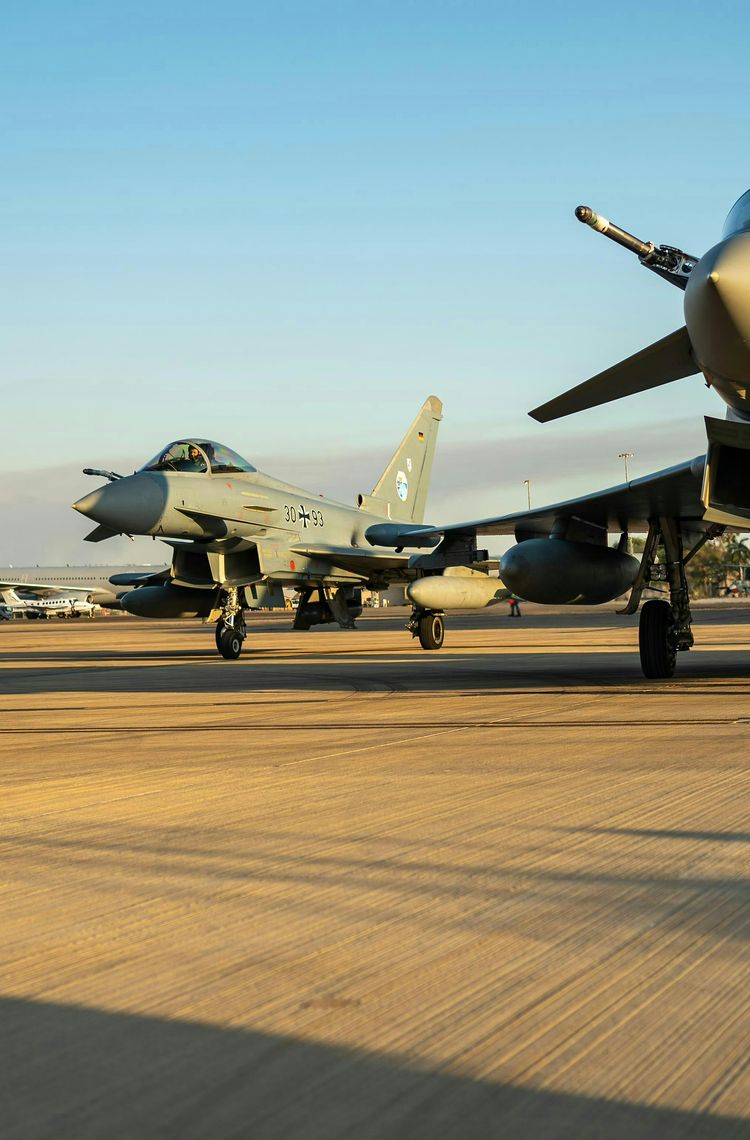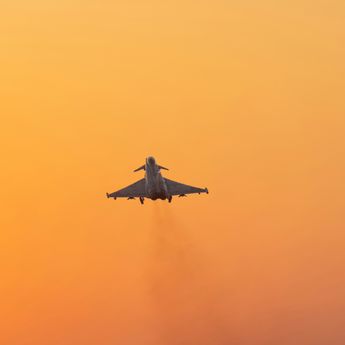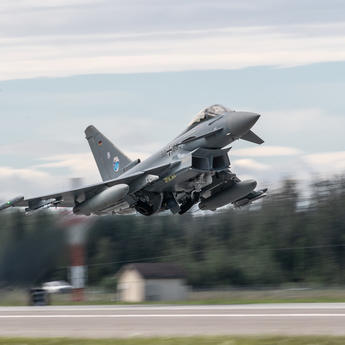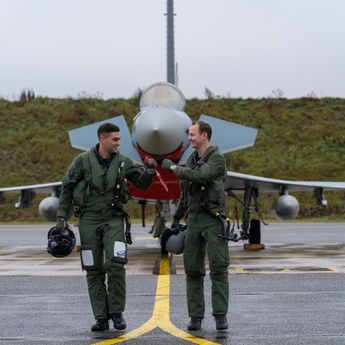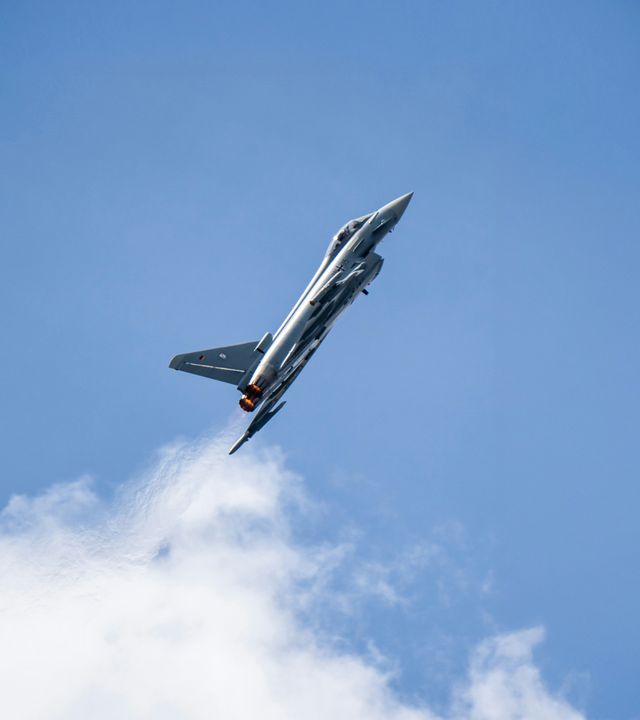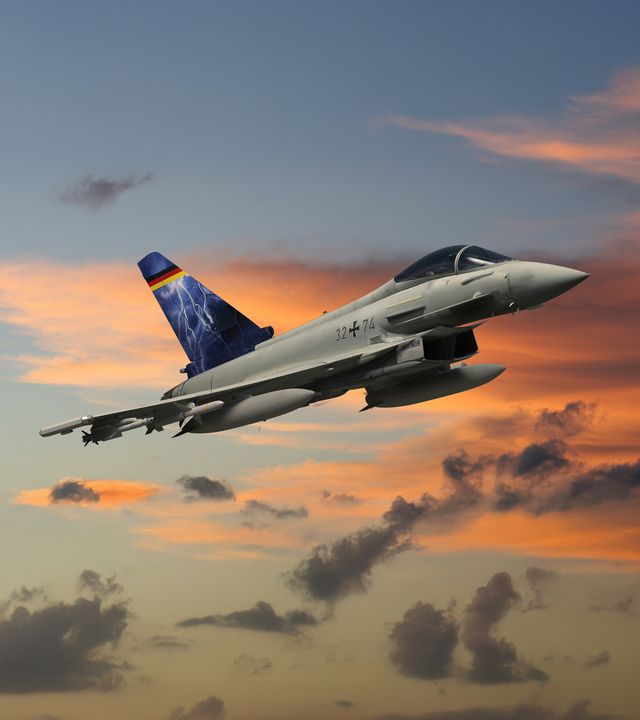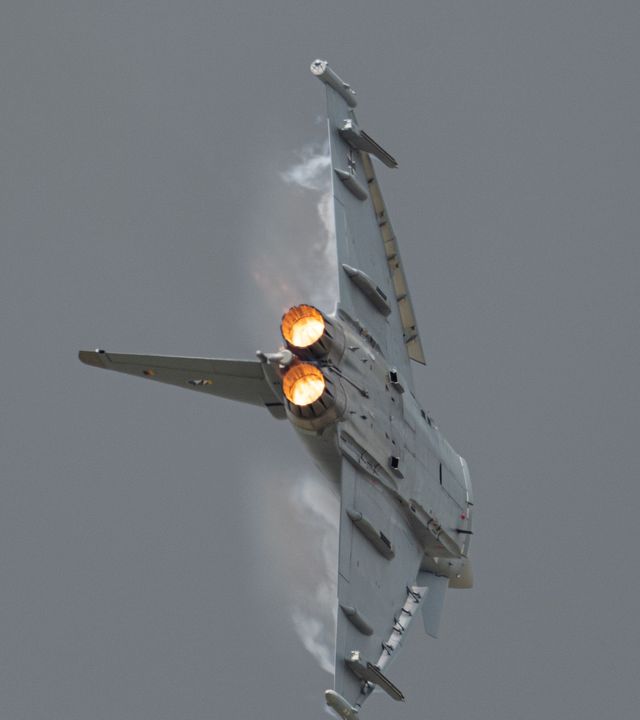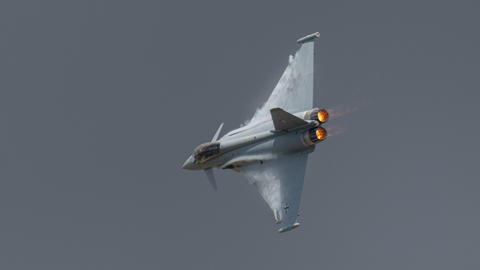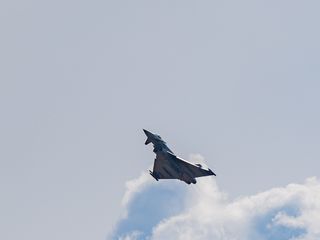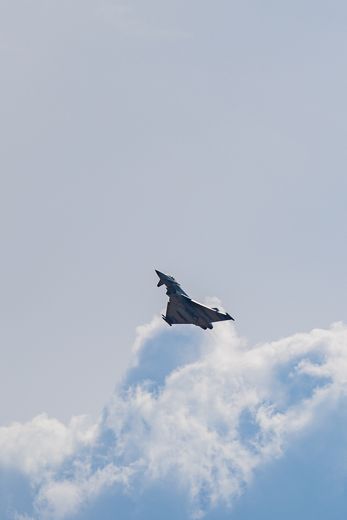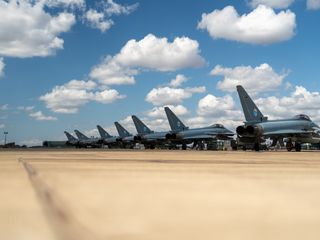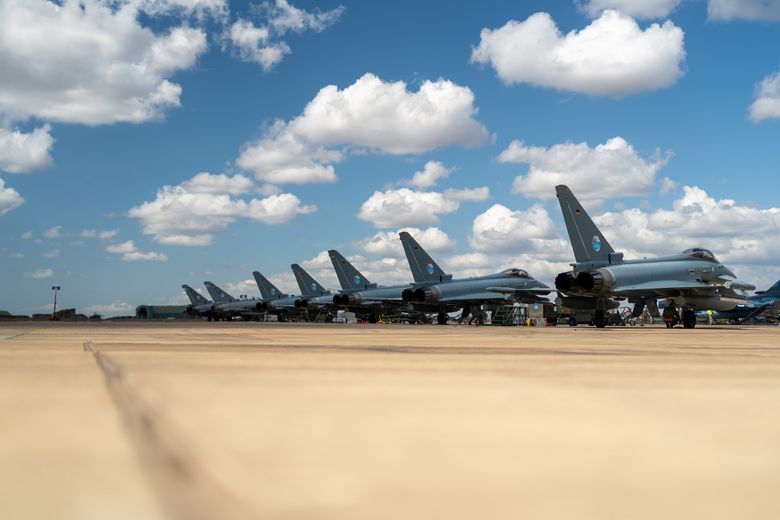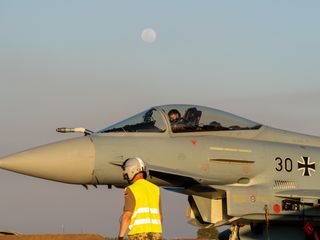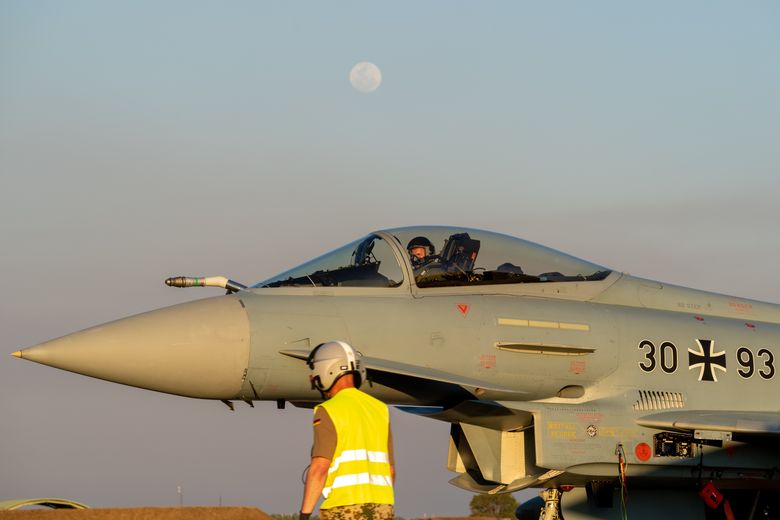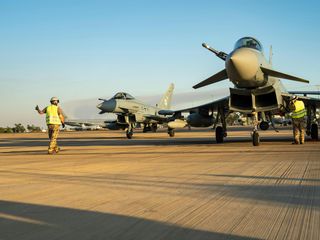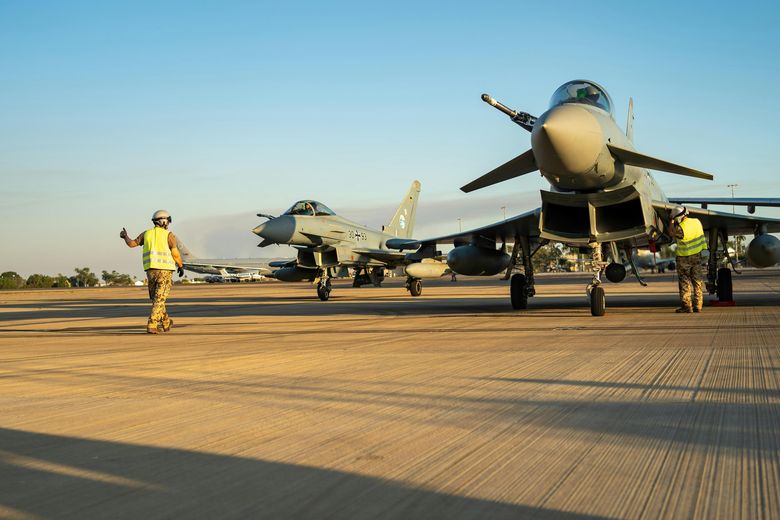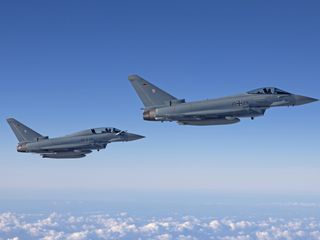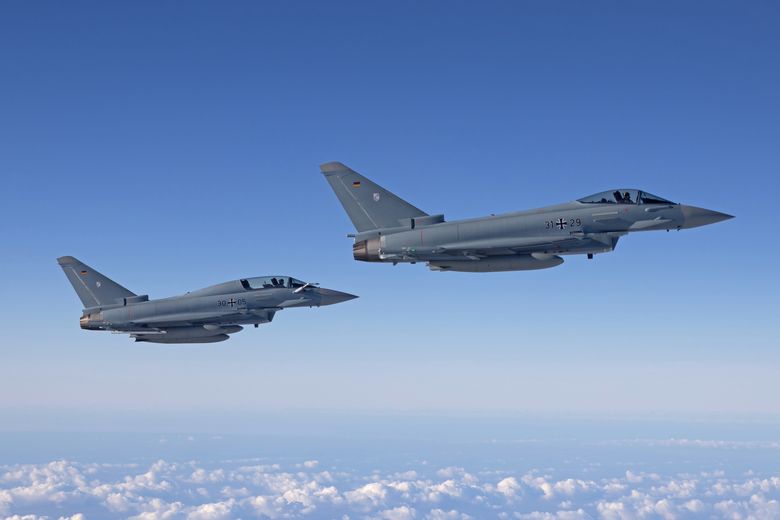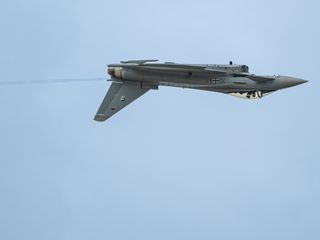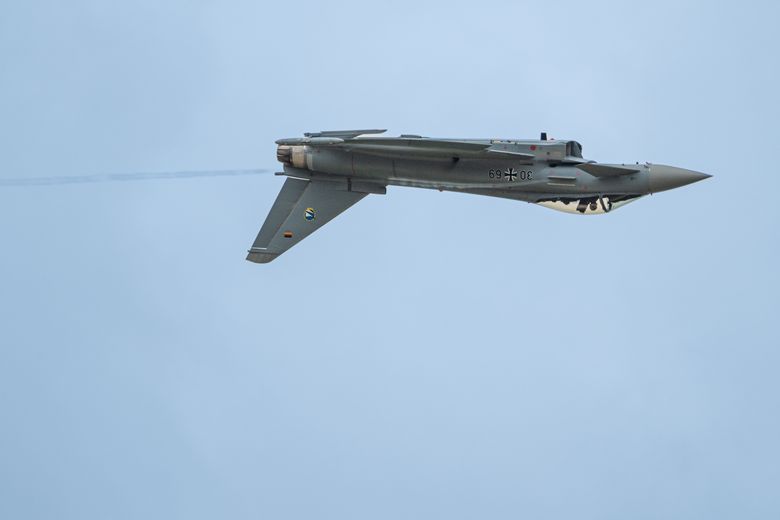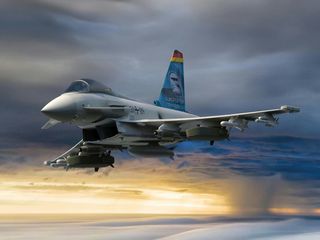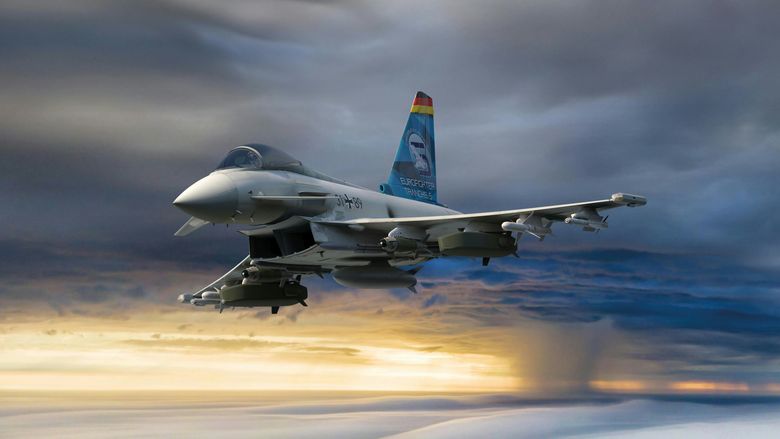Security assurance for Germany and Europe
The Eurofighter is a cornerstone of Germany's air defence and — as Europe's most frequently flown combat aircraft — a key pillar of European security. This multi-role fighter jet is suitable for both air combat and ground attack missions.
With 138 aircraft currently in service, the Eurofighter forms the backbone of the German combat aircraft fleet. Airbus is a key industrial partner in the Eurofighter programme. The company manufactures the aircraft for the German Air Force at the final assembly line in Manching, Upper Bavaria. Production of 38 new jets is currently underway. In 2025, the German government also ordered 20 additional Eurofighters.
For those who protect us
The Eurofighter enables fast and decisive action when it matters most. Whether it's standing by to intercept any unidentified aircraft in German airspace or defending NATO's eastern flank in the Baltics alongside allies, the Eurofighter is a vital asset for those who protect us every day.
The Eurofighter in action
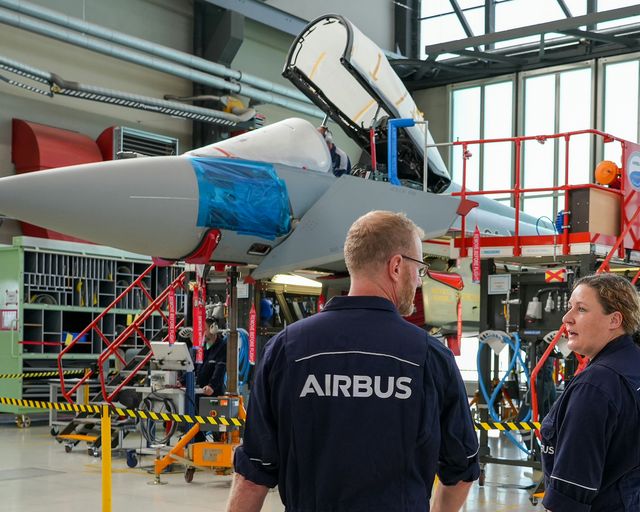

Technology leader and economic catalyst
The Eurofighter programme
The Eurofighter combines decades of experience in military aircraft construction. It secures almost 100,000 European jobs in more than 400 companies, according to PwC Strategy&.
The Eurofighter is a symbol of technological sovereignty. It enables Germany and its European partner nations to retain their ability to develop and operate complex air combat systems independently.
Eurofighter: A spotlight on the capability enhancements
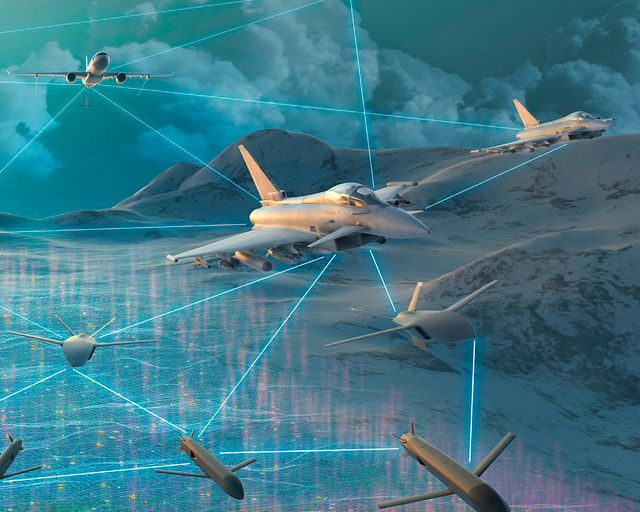

Trailblazer for the Future Combat Air System
To 2040 and beyond
From the cockpit of the future to cross-platform connectivity and the interaction of manned and unmanned aerial systems, the Eurofighter is being used to develop the key functions that will be required in the Future Combat Air System (FCAS) from 2040 onwards.
The Eurofighter is not only a trailblazer, but will also remain an integral part of military operations beyond 2060. It will take on new roles, for example as a command node for unmanned aerial systems.
Eurofighter glossary
At a glance
The most important Eurofighter terms explained.
What are Tranches?
Tranches refer to the production lots of the Eurofighter that meet the technological standard at the time of delivery.
The German Air Force has already ordered several production lots: The jets in Tranche 1 feature the basic capabilities that have been improved and expanded in the jets in Tranches 2 and 3. Currently, 38 Eurofighters from Tranche 4 are in production. They are scheduled to replace the aircraft of Tranche 1 by 2030.
Tranche 5 was ordered in October 2025 and covers 20 additional aircraft. This is an important step to secure the Eurofighter production until the introduction of the Future Combat Air System in 2040.
What is Quadriga?
Quadriga is the official name of the fourth Tranche of Eurofighters for Germany. It comprises 38 new Eurofighters, which are to be delivered by 2030. The aircraft mark a major step in the modernisation of the German Eurofighter fleet and will gradually replace the Air Force's oldest models.
What are the Phase Enhancements for the Eurofighter?
The continuous development of the Eurofighter is ensured by so-called Phase Enhancements. These are development packages that give the jet new capabilities.
Phase 4 Enhancement (P4E) is currently on the agenda. It improves key systems such as the radar, cockpit, and aerodynamics. This will enable the Eurofighter to continue to meet the requirements of the German Air Force in the future. The first contracts for this were signed in June 2024.
What does LTE stand for?
LTE stands for Long Term Evolution. This mid-life upgrade is designed to keep the Eurofighter at the cutting edge of technology until 2060 and beyond. It includes fundamental improvements to the system architecture, computing power, sensor technology, and cockpit to prepare it for future missions and integration into systems such as FCAS.
What is the Eurofighter EK?
The Eurofighter EK (Elektronischer Kampf) is a specialised development of the jet for electronic combat. Its core tasks include identifying and locating enemy radar systems to protect friendly forces, as well as actively combating enemy air defence systems with anti-radar missiles.
Currently, 15 Eurofighters of the German Air Force are being equipped for electronic combat. By 2030, the Eurofighter EK is expected to receive NATO certification and replace the Tornado ECR.
